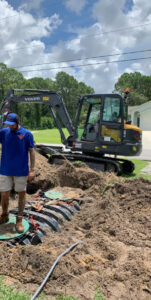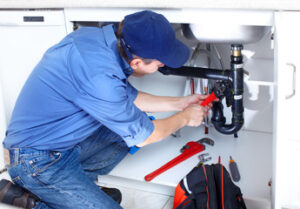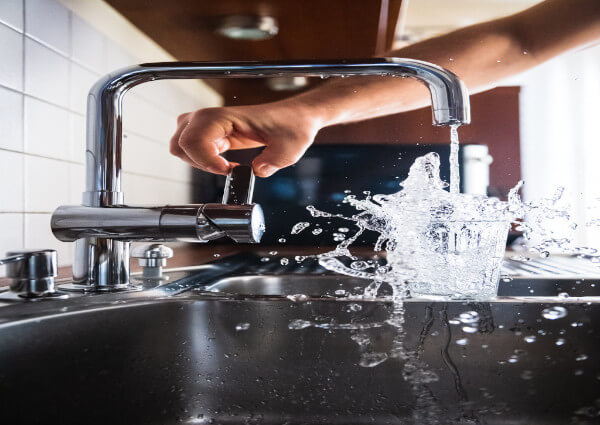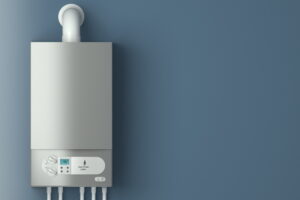Residential plumbing involves the pipes that bring water into and out of homes. It includes fixtures like sinks, toilets, and showers. It also handles wastewater from these fixtures and sends it to a sewage system or septic tank.
There are many different residential plumbing techniques that plumbers can use. Some are traditional, and some are innovative. Click https://www.plumberscranton.com/ to learn more.
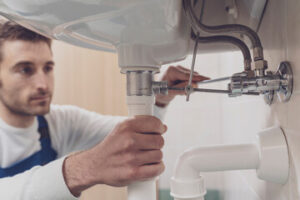
Water supply pipes bring fresh drinking water into a house, carrying wastewater away. They are often made of copper or plastic tubing that connects to fixtures such as toilets, showers and faucets. You will also find these pipes running underneath your floors. The most common material for these pipes is polyvinyl chloride, or PVC. Another popular option is cross-linked polyethylene, or PEX. These modern piping materials have become popular with homeowners and professional plumbers because of their durability, flexibility and easy installation.
The water supply pipe system in a home typically begins with the city water mains, which carry clean, pressurized water into your property. Then, the pipes run from the water meter into the water distribution systems inside your home. The main shut-off valve is usually located close to the meter to stop the flow of water in the event of an emergency. Make sure that every family member knows where this valve is and how to operate it.
Once the water is inside your house, it travels through the hot and cold water supply lines to each fixture. These pipes are primarily installed in straight lines so that the water moves easily from one area to another without resistance. The more bends that are introduced into the line, the less efficiently the water will move.
These supply pipes can be made from a variety of materials. Ductile iron, galvanized steel, and CPVC are some of the most durable, but they are costly and difficult to install. Copper, on the other hand, has a lightweight portability and offers great thermal conductivity. It is a good choice for the distribution systems in a new construction home or for repiping projects in older houses.
The most recent piping material is called PEX, which stands for cross-linked polyethylene. It has gained popularity over the past few decades due to its durability and ease of installation. It is commonly used in homes for hot and cold water distribution, to cycle reclaimed water, and for hydronic piping such as radiators. However, it is important to consult with a professional plumber to ensure that the PEX meets local plumbing codes.
In a residential setting, water supply pipes are responsible for transporting potable drinking water to the home’s plumbing fixtures. The system is composed of a network of pipe lines that carry cold and hot water to bathrooms, kitchens, toilets, washing machines, and other appliances. A residential plumber can assist with determining the best water supply piping options for your home’s needs.
The piping that transports water from your city or town’s public water supply line into your home is called the water distribution pipe, which connects to the public main and then branches into a household water supply system. This system then distributes the water to individual faucets and other plumbing fixtures throughout your home.
Once your home’s water supply reaches the plumbing fixtures in your house, the water is distributed through a series of cold and hot water lines that are each controlled by their own set of valves and faucets. The most common of these valves and faucets are ball valves, which are simple to install and use, but have a tendency to leak over time. More advanced faucets, like those used in showers, can be fitted with water-saving sensors to monitor flow rates and detect leaks when they occur.
Before a new domestic water piping system is installed, its piping layout must be established and the volumetric flow rate for each of the plumbing fixtures in the home must be known. This information is required in order to determine the amount of water supply fixture units (WSFU) each piping type can feed. The WSFU value for each plumbing fixture is established by the governing plumbing code. In addition, the piping design must also take into account the available main pressure for the project site as well as the projected velocity of the water at the most hydraulically remote fixture.
Water supply pipes are typically made from copper, steel, ductile iron, polyvinyl chloride (PVC), and chlorinated plastic (CPVC). Builders will often consider these materials based on the availability, cost, and acceptability of each at the time of construction. Over the past three decades, cross-linked polyethylene (PEX) has become a popular choice among professionals and DIYers because it offers more flexibility than traditional copper pipes, reducing installation labor and potential leaks.
Your home’s plumbing system isn’t complete without its drain lines. These carry waste, including sewage and toilet contents, away from each fixture like sinks, bathtubs, and showers. Each drain line starts at a plumbing fixture and runs to a main drain line that carries its waste to a municipal sewer line or septic tank on your property.
While your home’s drainage system relies on gravity to move water and waste, it also uses air pressure to help wastewater flow smoothly down drain lines. Vent pipes, which have capped openings, attach to each drain line and extend out through the roof.
Each drain line in your home has a trap that’s filled with water to prevent air and gas from passing up the line while draining down. This helps your home avoid odors, keeps your drains working properly, and helps keep the plumbing systems in each room of the house separate from one another.
Most of the drain pipes in a residential setting today are made of copper or the plastics polyvinyl chloride (PVC) and acrylonitrile butadiene styrene (ABS). They’re usually red for hot-water lines and blue for cold-water lines. Homeowners also may find older drain/waste/vent (DWV) pipe materials in some pre-1960 homes, including galvanized steel and cast iron.
In addition to considering the type of pipe material that’s best for your home, you should take into account the soil conditions where the pipes are installed. Exceptionally rocky or sandy soil may require the use of a thicker, more durable pipe like cast iron or concrete.
The diameter of a drain pipe also influences its ability to transport water and waste at a given rate. Larger diameter pipes can handle high volumes of water and waste, while smaller pipe sizes can cause clogs or slow drainage in some situations.
Other considerations for choosing a drain pipe include its installation costs, maintenance requirements, and warranty specifications. A plumber can assist you in finding the right pipe for your home that meets local regulations and offers a good value for its expected useful life. Getting this information upfront will help you make an informed decision when installing or replacing your home’s drain pipes.
The plumbing drain pipes in your home connect to a horizontal drain pipe called the soil stack that transports wastewater out of your house. Your toilets, bathtubs, showers, sinks and laundry machines send their waste to this pipe. All this waste combines into a sewer line that travels under the foundation of your home to a main sewer line, which in turn connects to your public or municipal sewer system.
A clogged home sewer line can have serious consequences for your family and home. If it goes unrepaired, sewage can back up into your home’s plumbing fixtures and cause serious damage. Fortunately, this problem is relatively easy to diagnose. The simplest way to check your home’s main sewer line is by watching where water and sewage exit through the lowest part of your bathroom. If it exits through a toilet, tub or stand-up shower, you likely have a main line sewer problem.
Your home’s main sewer line is typically four to six inches in diameter, and it slopes downward to promote the flow of debris and waste away from your house and into your city’s sewer system. It also runs through your yard, so it’s important to maintain its condition.
Most residential sewer lines are made of cast iron, galvanized steel, PVC plastic or ABS plastic. Some older homes have Orangeburg pipe, which was a common choice for house sewer lines until the mid-1860s. Unfortunately, these pipes are prone to deterioration and corrosion, which can lead to blockages that require costly repair or replacement.
The most common cause of a clogged sewer line is when people flush non-flushable items down the toilet. Children are notorious for tossing toys and clothes down the toilet, but these objects can quickly clog your home’s drains. Other causes of clogged sewer lines include tree roots and grease.
A good way to prevent problems with your home’s sewer line is to regularly weed and mulch your yard, which will help keep tree roots from entering and damaging the pipe. You should also avoid using corrosive household drain-cleaning products, as they can erode and eat through the pipe.

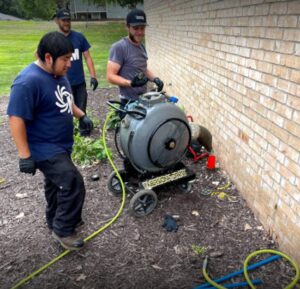
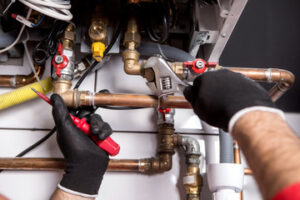 This means that it is more likely for commercial plumbing to experience issues like leaks and clogs. So what separates commercial plumbers from residential plumbers? Read on
This means that it is more likely for commercial plumbing to experience issues like leaks and clogs. So what separates commercial plumbers from residential plumbers? Read on 